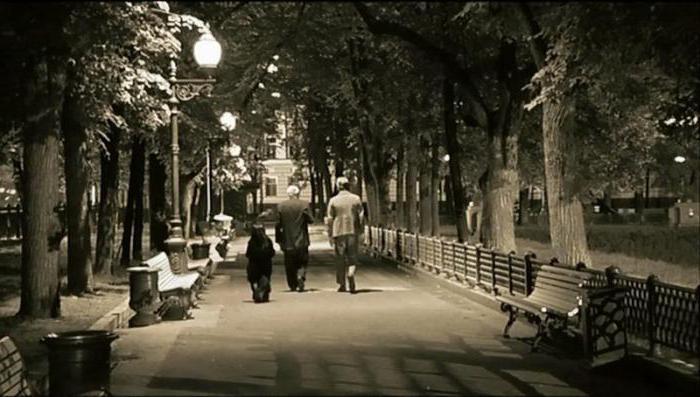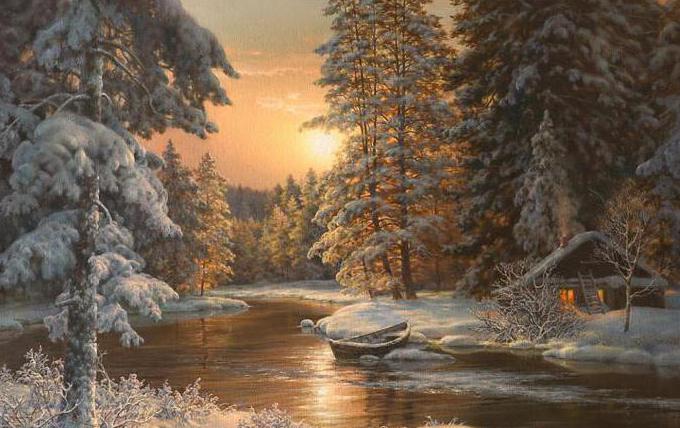Landscape in literature has an important function. With it, the author embodies his vision of the world. The description of nature is an expressive element of a literary text that allows the reader to plunge into the atmosphere of a story, short story, novel or poetic work. But, like other artistic images, this component in the world literature has passed a complex and long development path.
The origin of the landscape
Landscape in literature, music, painting is a description of an urban or rural landscape, a mountain slope or a virgin forest, in a word, all that surrounds a person. But if in painting it is a separate genre and originated in ancient times, then in other forms of art its history began much later. An important tool for creating ideological and aesthetic content is the landscape. In literature, music, he has long been the subject of study by many art historians and critics. Nature in the works of great composers gets a new beautiful sound. But her description nowhere has such a diverse and sometimes unexpected purpose as in prose and poetry.
Until the 18th century, the landscape almost did not exist in literature. In the works of Antiquity and the Middle Ages, little attention was paid to him. Rather, it served to indicate the scene. The humanistic ideas that arose during the Renaissance gave rise to the need to use artistic forms and means by which one could reflect the mood and feelings of a person.
Functions
The landscape plays a huge role in prose and poetry. In literature, music, painting, this concept is not equivalent. In the visual arts, landscape is a genre in which nature is the primeval or man-made nature. In music, it is a reflection of environmental sounds through musical instruments. The role of landscape in literature is great because it can carry not only background but also semantic load. In a work of art, depending on the intentions of the author, a landscape description can indicate the place of action, create a certain atmosphere or reveal the character of the hero.
Thus, a powerful means of image is the landscape in literature and painting. As Leonardo da Vinci said, the beauty of nature in art cannot be heard, it can only be contemplated. Poetry and music make it accessible to hearing.
Russian literature
Perhaps there is no work in Russian literature in which there is no landscape. Classics used this extra-plot element for various purposes. One of the best landscape writers of world significance is Ivan Turgenev. Using a description of nature, this author showed how the mood of the protagonist changes. He achieved this with the help of very dynamic landscapes: “A strong wind suddenly hummed in the sky. Rain poured in streams. "
Landscape in literature is also used to convey national color, which can be seen in the romantic works of Nikolai Gogol. Depending on the direction, the functions of landscape descriptions may vary. Thus, in the same author, in realistic prose, the image of the world around him serves to reveal the inner troubles and feelings of the hero. And in the accusatory-satirical novel “The Overcoat,” the cold Petersburg landscape, perhaps, serves as a symbol of the cruel bureaucratic world.
City landscape
Everything that surrounds a person has changed rapidly over the past century. Life is mainly concentrated in large cities and towns. And because of this, the urban landscape in literature was widespread. The novel "The Master and Margarita" begins with a description of one of the historical places in Moscow. But Mikhail Bulgakov uses it not only to indicate the meeting place of the main characters and the beginning of the plot. “The terrible May evening” is painted by the author with the aim of creating a certain mysterious atmosphere, foreshadowing a significant terrible event. As a result, the reader already from the first lines feels a sense of impending danger that threatens the characters of the novel.

In the chapter in which Bulgakov depicts the fateful meeting of the Master and Margarita, very little is given to the description of the city landscape. But the mention of the fact that the heroine turned off Tverskaya Street into an alley, and in her hands were yellow flowers that were the first to appear in Moscow, creates a picture of an early gray city spring. This picture is dull and sad, but it is not without romance and hope.
Rural landscape
In the foreground in the story of Alexander Solzhenitsyn "Matrenin Dvor" stands a description of the extraordinary character of the main character. But the difficult fate of a peasant woman cannot be conveyed in the text without such a pictorial means as the rural landscape in literature. A photo of the poor neglected hut can be seen below. It was here that the writer spent almost a year and met a woman who served as the prototype of the main character of the story. The image of the hut, along with the image of the Russian village, creates a background without which a complete picture of the desolation of peasant life is impossible.
Seascape
The image of the sea is colorfully represented in the works of Jules Verne. The writer experienced a craving for sea travel in real life. He showed this love to his readers with the help of colorful and vivid descriptions that are present in each of his novels.
Landscape in a fairy tale
The description of the landscape in literature is a pictorial means, which is often present in fairy tales. A mysterious dense forest, a fabulous mountain or a magic stream stand before the eyes of the reader with wonderful images. Without these paintings, the work would not have bright magical shades. But many literary scholars believe that landscape descriptions are poorly represented in the fairy-tale genre and do not perform any significant functions. However, it suffices to recall the works of romance by William Hauf. The adventures of the heroes of the fairy tale "Frozen" begins in the picturesque Black Forest. The story of the German author begins with the image of a night forest.
The fabulous landscape is also decorated with the works of the Russian writer Pavel Bazhov. But still in this genre the description of nature has an exclusively decorative purpose.
Poetry
Above all, Sergei Yesenin loved Russia, and therefore he attached great importance to the description of the Russian landscape. Nature in the works of this classic is a single organism. Natural phenomena in his works are not only interconnected (“Bird cherry is falling with snow”), but also are humanized (“Winter sings, auket ...”). And in later poems they are literally woven into the emotional experiences of the hero.
The themes of love, creativity and nature are intertwined in the works of Boris Pasternak. An example is the poem “February, get ink and cry”, where the description of early spring is connected in the hope of renewing life, to change it for the better. In this work there are memoirs of the lyrical hero and his dreams. And everything is accompanied by a description of the world, in the smallest details.
Symbolist prose
What is landscape in literature? Definition of this artistic phenomenon is not easy to give. Many researchers today are trying to generalize this means of expression. The role of landscape in the work of individual authors is devoted to many works. But the patterns of its use in the literary text have not been identified. Each artist introduces the landscape into his work to the extent that it is necessary for the embodiment of his philosophical and aesthetic ideas. In the prose of the beginning of the last century, there are descriptions of nature designed to symbolize experiences, fate, and the character of a hero.

Examples of symbolic prose are Thomas Mann's short stories. In one of them - "Death in Venice" - there are many characters. The main one is an epidemic city. The main character finds himself in Venice, which, based on its natural features, is associated with romance and death, with joy and mystery. One of the most legendary cities in the work of a German writer serves as the backdrop for the tragic story of a man seized with passion, and in the name of it intentionally going to certain death.
Landscape as a means of expressing the author’s thoughts is also present in the story of Ivan Bunin, “The Lord from San Francisco”. Vivid pictures from the window do not please the main character, because he lost the ability to enjoy the beauty of the world. The nature of the island of Capri symbolizes everything that the gentleman from San Francisco missed for his long but empty life.
Landscape is an integral part of classical literature. It is impossible to understand the works of great poets and writers without an analysis of natural descriptions. It is in them that the deep thoughts and ideas of the authors often lurk.